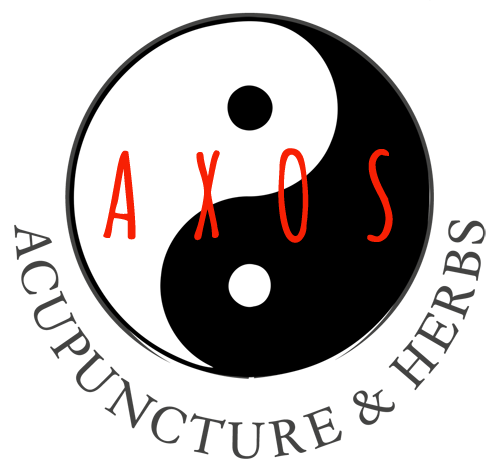Life Begins with Water
Chinese medicine never recommends single rules for everyone to follow. The idea of general advicpe to drink 8 cups of water - or any set amount - is too simplistic. Fluid needs are constantly changing. Often, more water simply increases urination, which can be good at times but at other times can be taxing, particularly for the elderly. The key to understanding water and health is:
becoming more aware of our fluid status, and
how to eat and drink for best absorption and utilization of water.
Many people, young or old, are chronically under-hydrated, and dehydration underlies a great many chronic degenerative conditions. To have a basic idea whether you are dehydrated, assess your first urine after getting up in the morning. Healthy urine is light straw colored and without strong smell. Morning urine that is dark, scanty or strong smelling is a sign of dehydration (and internal heat), while morning urine that is watery, pale, odorless and abundant signifies hydration (but also indicates internal cold). In ability to sleep through the night without waking to urinate often indicates deficient qi or vital energy. This may seem counterintuitive, but the qi of the lower arena is needed for the action of holding the bladder until morning.
Very commonly, elderly men and women will deliberately avoid hydrating sufficiently because of urinary difficulties. If urinary difficulties are present, they can be classified into five types (the five lin in Chinese medicine): painful (burning), cloudy, bloody, stone, and qi taxation (fatigue after urination). Healing strategies include restoring hydration while also aiding diuresis, through increasing hydrating drink and food (grains, congee, porridge, soups, stews) along with foods known to be mildly diuretic, then addressing the presence of internal heat (inflammation) or cold (stagnation). Foods with diuretic quality include bland foods (e.g. zucchini, bean sprouts, mushrooms, sea vegetables, melons, fruit eaten with their peels, or, within animal food, single shell mollusks) and green beans eaten complete with their pods (e.g., string beans, snow peas and sugar snap peas, or a broth made from just the pod themselves). From this beginning more precise treatment strategies are developed, based on the type of difficulty present.
Morning Water
In our family, we think one or two glasses of room temperature water shortly after waking, ideally 15-20 minutes before breakfast. This water is not primarily for hydration, rather, it passed quickly through an empty stomach and irrigates the intestines. In healthy person, peristalsis is stimulated, there is morning elimination, and after about 20 minutes, nearly the entire amount of water is reabsorbed for use. The Large Intestine is very important for regulating hydration in the body, including reabsorbing and redirecting water from digestive waste. Drinking plain water first thing in the morning is a very strong healthy practice centered on the Large intestine. This water - neither cold nor hot - is the only drinking that is beneficial to do quickly.
Wet Food
The best breakfasts for hydration are wet, cooked breakfasts: porridge, congee, or even soup (essential in a traditional Japanese breakfast, for example). Wet breakfasts nourish stomach yin and provide time-released hydration to the body. Soups were once part of nearly every meal, a practice that can be revived for noticeable improvements in health through nourishing stomach yin.
Drinking Water Between Meals, Not With Food
For best digestion, drink water between meals, because water (or other drink) can dilute the digestive secretions necessary for efficient and timely digestion (including stomach acid and pancreatic enzymes). The sensation that you can't eat or swallow without drinking something "to wash it down" could be a sign of chronic dryness due to an internal heat condition (low-level inflammation). Drink in sips during meals to satisfy that urge (or the culinary urge of matching drinks with food). Once better hydrated through morning water, wet breakfasts and ample (but not measured) water between meals, the sensation some have that food is too dry to swallow will disappear.
The primary step in digestion is breaking down solid foods through physical ad chemical means into the semi-liquid mass known as chyme. This is achieved in the stomach, after which the chyme is slowly released into the duodenum, the upper portion of the small intestine. Drinking fluids during a meal can dilute the acids and other secretions, causing the stomach to slow its pace or sending the chyme forward without sufficient processing.
Foods not sufficiently broken down in the stomach must undergo this first step of digestion in the small intestine. The small intestine is capable of providing another attempt at this primary phase of digestion, but whereas the stomach is a decidedly acidic environment, the alkaline environment of the duodenum is better suited for the secondary steps.
Digestion is further inhibited by drinking col beverages, since digestion works best at body temperature. Having ice in drinks is not a health supportive practice as it dramatically slows digestion. Further, since all metabolic functions are hindered by cold, it is sensible to avoid introducing cold to the digestion if interested in restoring metabolism or avoiding weight gain. It is best to wait 20-30 minutes after eating before drinking water, tea, or other drinks at room temperature or above.
By Andrew Sterman
Source Golden Flower Chinese Herb New Spring 2017
